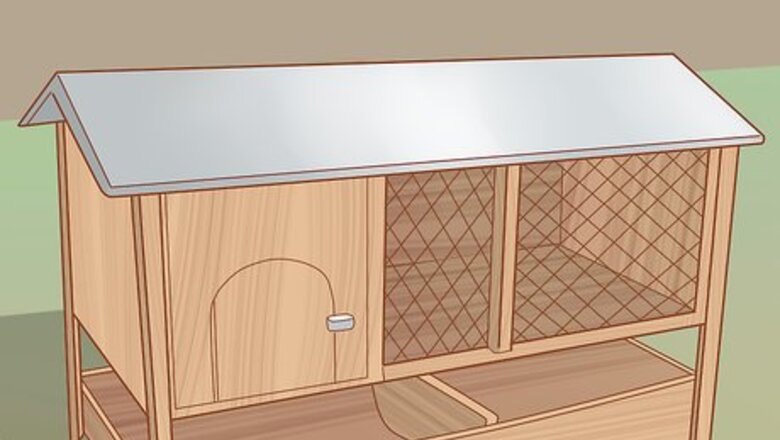
views
Setting up and Maintaining the Cage
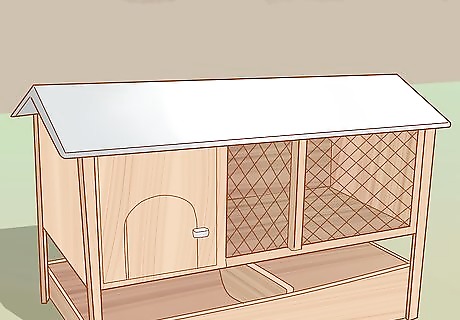
Choose housing for the quails that will keep them safe from predators. There are a variety of different housing options for quails including cages, pens, rabbit hutches, chicken coops, and aviaries. The main requirement to consider when choosing how to house your quails is ensuring that predators cannot get in. Always have a roof and make sure that any wiring is small enough to keep the quails in and other animals out. If you are housing the quails in a raised cage with a wire base, add a catch pan or barrier below the base to prevent predators from reaching the feet of the quails from below. If the entire cage base is made out of wire, add a piece of plywood in a corner of the cage so that the quails do not have to always stand on the wire. This is because standing directly on wire for extended periods of time can damage their feet.
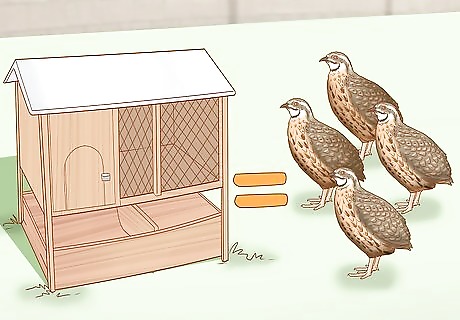
Make sure that each quail has at least 1 sq ft (0.093 m) of floor space. Quails need enough floor space to ensure that they don’t feel confined and stressed. Stressed quails are more unlikely to lay eggs. To increase the floor space for each quail, expand the size of their cage or let them roam freely for a portion of the day. Quails that are kept in overcrowded conditions are more likely to be stressed. This is because there isn’t enough room for each bird to perform natural behaviors.
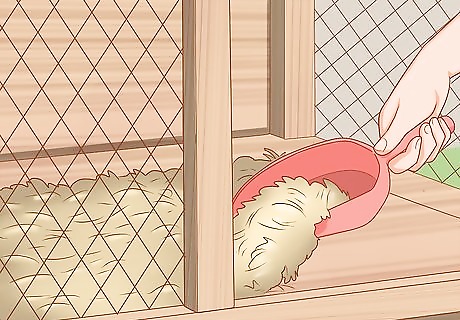
Place hay or straw in the cage for the quails to use to build nests. Nesting behaviors differ between individual quails. Some quails will lay eggs directly on the ground, while others prefer to lay in a nest. Providing nest-building materials will help the quails that prefer to build a nest to lay eggs. Quails in community pens tend to not build nests and will lay eggs on the ground instead.
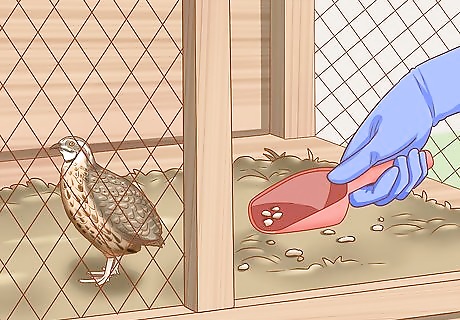
Clean the cage every 1-2 weeks to avoid disturbing the quails. Quails lay best when they have as few disruptions as possible. This also means that you are less likely to accidentally destroy a nest. Although the cage only needs to be cleaned every 1-2 weeks, make sure that the quails have access to fresh food and water every day.
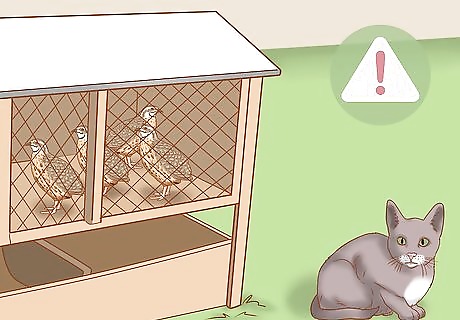
Keep the quails undisturbed and away from predators to reduce their stress. Quails will lay better if they are in a quiet and calm environment, away from loud noises. Also ensure that pet cats and dogs are kept well away from the quails because even if they physically cannot reach them, the presence of predators can scare them.
Meeting the Diet and Light Requirements
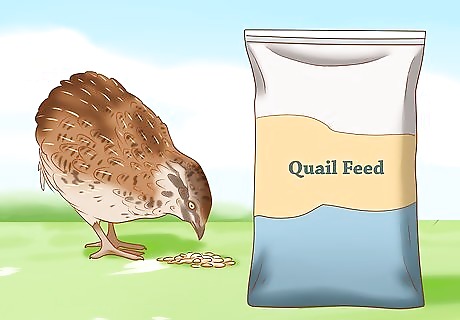
Feed quails aged 6-20 weeks old a developer diet. A developer diet helps to raise young quails for quality egg production. Generally, developer diets are made up of 18% protein and 0.5% phosphorus. You can purchase quail feed from animal feed stores or online. This helps the quails to produce more eggs and for the eggs to have thicker shells.
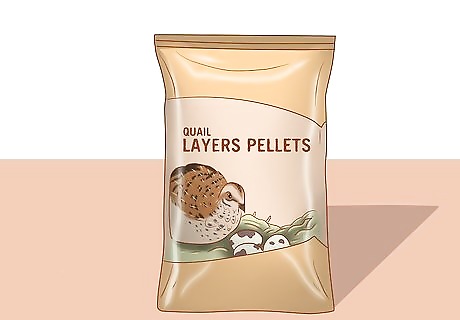
Choose a layer diet for quails aged over 20 weeks old. Laying quails that are older than 20 weeks are classified as mature birds and have different dietary requirements to younger birds. Layer diets usually involve 19% protein and 0.65% phosphorus. Check with you veterinarian if you have any questions about the diet of your quails.

Add a calcium enrichment supplement if the egg production is low. You can purchase calcium supplements that are mixed into the quail feed. Limestone, crushed oyster shells, and calcium premix are all good enrichment options. Calcium is essential for high egg quality and production in quails. You can purchase calcium supplements from animal feed stores or online. Follow the directions on the label or consult a veterinarian to determine how much to add to the quail feed. Having enough calcium for egg laying is especially important for older quails.
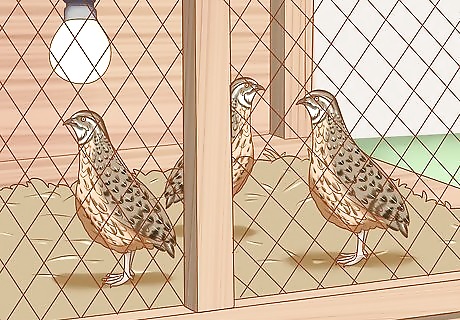
Ensure that the quails have 14-16 hours of light per day. Lighting is essential for quail egg production. Keep the quail cage in a sunny area if possible. If the cage cannot be kept in a sunny area or during winter months with lower sunlight hours, hang artificial lighting above the cage to keep the quails laying. Don’t exceed 16 hours of light per day as the quails need time without light to be able to sleep. The laying mechanism of quails shuts down if they get below 12 hours of light per day. It is normal for egg production to decrease during the winter months as the number of sunlight hours reduces. This is healthy for the quails as it helps them to rest. Egg production will rise again as the number of light hours increases.
Breeding, Age, and Sex Requirements
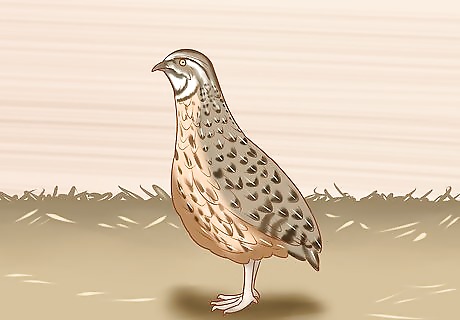
Get 8-12 week old female quails as they are able to produce eggs. Female quails only begin laying eggs once they have reached maturity, which takes a few months. The egg production is normally the highest during the first year of laying and then it declines as the quails age. Domestic quails have a life expectancy of up to 4 years.

Give new quails 2-6 weeks to settle in before they are expected to lay eggs. Both the transportation process and being introduced to a new flock can be stressful experiences for quails. Let them settle into their new surroundings first and they should start laying shortly after. 2-6 weeks is a general guide for how long most quails take to begin laying in a new environment. Some quails will start laying much earlier.
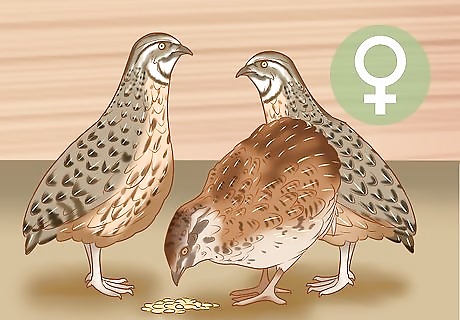
Keep a group of females together if you want eggs for consumption. You do not need to include a male in the flock for the females to produce eggs, as females will lay regardless of if a male is present. The eggs will be unfertilized which means that they are suitable for consumption.

Place 1 male in the flock if you want the quails to breed. A group of 1 male and up to 5 females is ideal if you are wanting to breed quails. Males are often more aggressive than females. It’s best just to have 1 male bird per group, as otherwise, the males may fight. It’s easy to tell the males and females apart. Males display more aggressive behavior and have brighter feathers on the head, neck, and back. Females tend to be docile and have a more plain coloring.











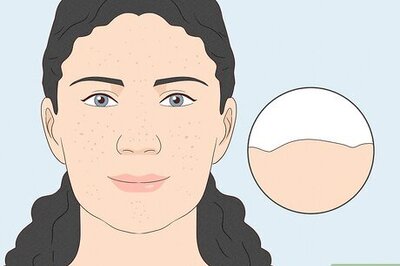








Comments
0 comment